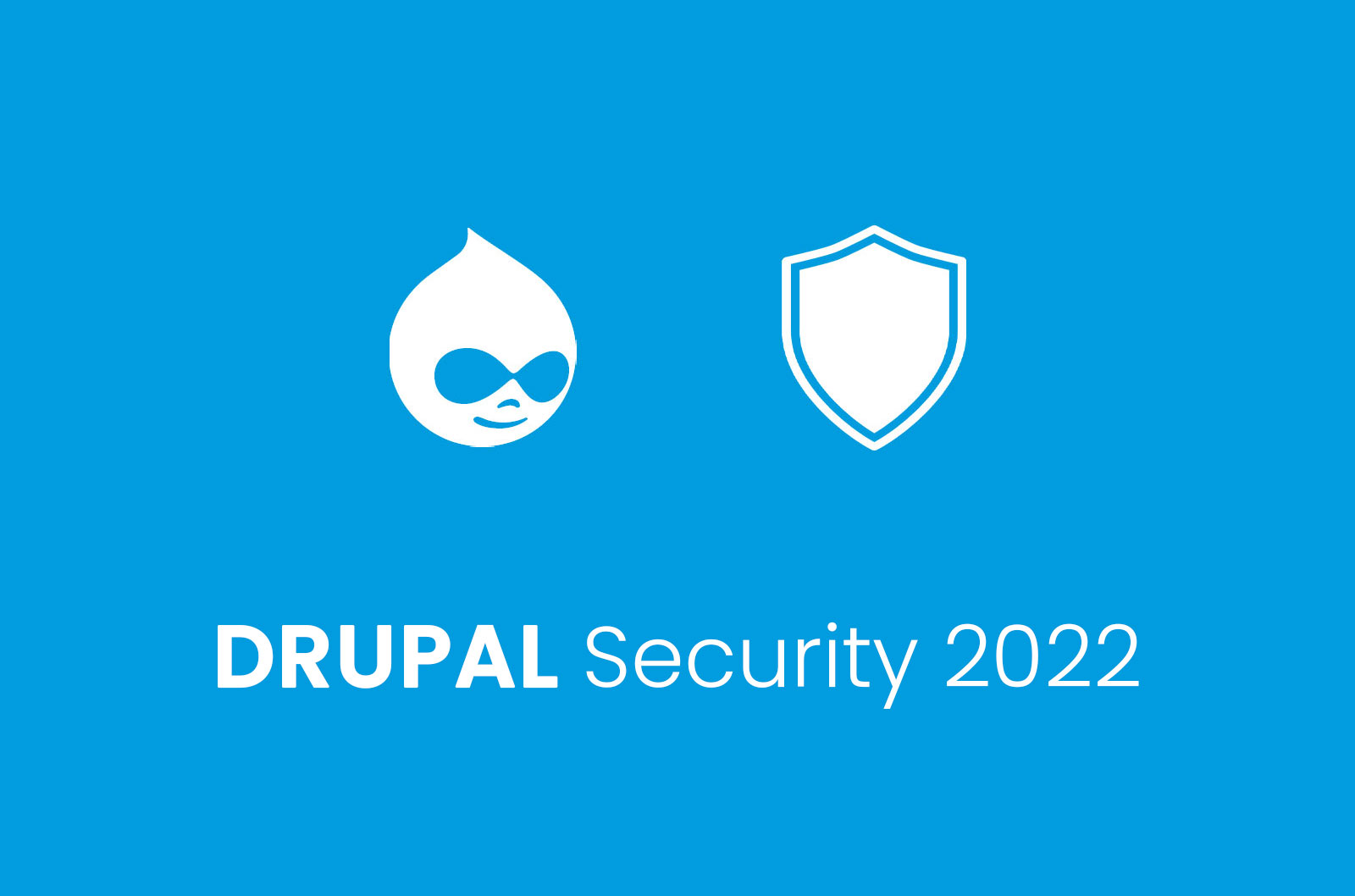For any website owner, the security of their site is one of their top priorities. The Drupal community has been working on a lot to improve the safety and stability of all Drupal-based websites. There are many things that you can do to help secure your site, such as installing updates promptly and changing passwords often. Security is one of the most important aspects of running a successful website or web application. There are many security concerns that must be addressed when building an online platform.
Security is the main factor to consider for many business owners, however, it should be. People who are trying to hack your site could steal sensitive data or even destroy the entire site. Fortunately, there are steps you can take to protect yourself and your website from these dangers.
In this blog post, we will go over the following guidelines for best practices when it comes to securing your Drupal website for the year 2022.
- Why is Drupal security important?
- When do I need to secure my Drupal CMS?
- Drupal hacking statistics – Let’s talk about the numbers
- 2022 Best Practices On Drupal Security
- Drupal Hosting Security – Choosing The Right Hosting Provider
- Limit Number Of Drupal Login Attempts
- Password Reset Security Tips
- Use Strong Drupal Passwords
- Enable Drupal Security Notifications
- Manage Drupal User Accounts
- Restrict Drupal Access To Authenticated URLs Only
- Monitor & Detect Drupal Hacks
Why Is Drupal Security Important?
If your website is hacked, all of your data could be at risk. This is a serious problem for both businesses and individuals who depend on their websites to generate revenue or spread important information. Hackers can hold you hostage by demanding a ransom in order to release the site from further damage. They might even try selling off the stolen content or customer data they’ve obtained through hacking attempts.
Don’t become another statistic! Secure Drupal security should be one of every business owner’s top priorities when building an online platform. The following guidelines will help you stay safe while using Drupal-based content management systems (CMS).
When Do I Need To Secure My Drupal CMS?
One way that hackers break into sites nowadays is through vulnerabilities within outdated software. It’s important to install updates as soon as they become available in order to keep your site safe from these types of attacks. Another common way that hackers gain access to websites is by guessing passwords. This can be prevented by using strong passwords and changing them often.
Drupal Hacking Statistics – Let’s Talk About Numbers
Here are some statistics from a recent study on Drupal security breaches.
In the last 14 years, there have been over 12,000 reported vulnerabilities across all versions of Drupal Core alone! That’s why it is important to always stay updated and use strong passwords when setting up your website or blog. According to research, 75% of websites hacked via brute force attacks were built with PHP programming language. Attackers usually try using words that they think site owners will include in their passwords for this type of attack. It only takes one weak link within the chain to enable attackers into gaining access to sensitive information about you and other users on your platform.
2022 Best Practices On Drupal Security
When creating a new account on your site, don’t include predictable information such as name or birth date. Choose something more creative instead! This will help prevent brute force attacks from gaining unauthorized access to your website without being detected first.
Some websites offer users an incentive for completing surveys or signing up with their service using their social media accounts. While it may seem attractive at first glance, these types of rewards can lead cybercriminals directly into gaining access to private user data that you would rather keep hidden away from prying eyes. Be sure to only accept invitations sent through official domains before giving out any personal information online.
If the layout of your website is not up to date, it could make you a target for hackers looking for easy ways into gaining access to sensitive data and other customer records held within an outdated CMS. It’s best to hire a professional web developer who uses Drupal-specific security guidelines when updating or creating new pages for any platform that contains valuable content or personal information about clients.
Here are some guidelines on best practices of Drupal security for the year 2022.
Drupal Hosting Security – Choosing The Right Hosting Provider
When it comes to choosing a Drupal web host, always look for one that has reliable security measures in place. There are several different types of attacks cybercriminals use when trying to gain access into your website’s backend through shared hosting servers. These include SQL injections, cross-site scripting (XSS), and remote file includes.
Here are some statistics from recent studies on hacking attempts within shared hosting environments:
- SQL injection is often used by attackers who want to exploit vulnerabilities within an outdated CMS or database server running directly on top of a Linux platform. This type of attack can allow unauthorized users direct access via third-party software installed on the same machine as the target website directory location(s). With this type of attack, the hacker can gain access to all sorts of data that was stored in the database including user names, passwords, and credit card information.
- Cross-site scripting is a type of attack where malicious code is injected into an unsuspecting victim’s browser session. This can allow attackers to steal cookies and other sensitive information from users who have previously visited your website.
- The remote file includes (RFI) is another common type of attack vector used by hackers when trying to identify vulnerabilities within a web server. By sending a specially crafted URL request containing a malicious file name, an attacker can trick the web server into executing unauthorized code on its behalf. This could potentially give them control over the entire system or even enable them to download sensitive files from the server.
- The best way to protect your website from these types of attacks is by choosing a web host that takes security seriously. Look for one that has implemented up-to-date software firewalls, intrusion detection/prevention systems (IDS/IPS), and secure socket layer (SSL) certificates on all servers. This will help ensure that your site remains safe and protected from any unauthorized access attempts.
Limit Number Of Drupal Login Attempts
One of the best ways to help prevent brute force attacks from gaining unauthorized access to your website is by limiting the number of login attempts that can be made in a certain amount of time. There are several different modules that you can install on Drupal that will help automate this process for you.
Two popular modules that you can use for this are Login Security and Limit Login Attempts. The first module helps protect against dictionary-based attacks by checking user credentials against a list of known bad passwords. It also tracks failed login attempts and blocks any IP addresses that have attempted to sign in too many times within a given period of time.
The second module, Limit Login Attempts, does pretty much what it is – it limits the number of login attempts that can be made within a specified timeframe. This module also works in conjunction with the Login Security module to help protect against brute force attacks while minimizing false positives for legitimate users who happen to mistype their passwords on occasion.
Password Reset Security Tips
One of the most common ways that attackers gain access to your website is by using automated tools designed specifically for stealing user passwords through social engineering techniques. Password-based authentication has been proven time and again as an insecure method of protecting sensitive information, especially when it comes to high-profile websites that contain extremely sensitive content such as personal data and financial records (think banks).
By implementing two-factor authentication or multi-factor authentication, you’ll significantly reduce any risk associated with unauthorized account access attempts. This is because, in addition to a username and password, you’ll also be required to enter a unique one-time code or pin that is generated by a separate device (such as your mobile phone) every time you sign in.
Use Strong Drupal Passwords
Another important factor in keeping your website safe and secure is using strong passwords. A strong password should be at least eight characters long, contain a mix of upper- and lowercase letters, numbers, and special characters, and not be something that can easily be guessed by someone who knows you.
It’s also a good idea to change your passwords on a regular basis (at least every three months) and never use the same password for more than one account. You can use a tool like LastPass or KeePass to help generate and store strong passwords for all of your online accounts.
Enable Drupal Security Notifications
One final way to help keep tabs on any attempted attacks against your website is by enabling Drupal security notifications. These are messages that are sent to you via email whenever someone tries to access your site without authorization, or when Drupal core files are modified in any way.
This can be especially helpful if you’re not able to log in to your website for some reason and need to troubleshoot the issue as quickly as possible. There are a number of different modules that you can use to help set up security notifications, such as Security Alerts, Security Logging, and Admin Notifications.
Make sure that your web host takes security seriously by implementing up-to-date software firewalls, intrusion detection/prevention systems (IDS/IPS), and secure socket layer (SSL) certificates on all servers.
Manage Drupal User Accounts
Managing Drupal user accounts securely is also an important part of keeping your website safe and secure. It’s a good idea to remove any default users that came bundled with the installation, such as anonymous users and administrators. In addition, you should consider disabling or removing any test modules/profiles in order to prevent unauthorized access from occurring if someone does discover your login credentials through other means (such as brute force attacks).
Restrict Drupal Access To Authenticated Urls Only
Another way to help secure your Drupal website is by restricting access to authenticated URLs only. This can be done by editing the .htaccess file on your server and adding the required lines of code.
You can also use the Drupal Security module to help lock down access to specific areas of your website depending on your needs. For example, you may want to allow only authorized users to view or edit content, manage files, or create new accounts.
Monitor & Detect Drupal Hacks
Last but not least, you’ll want to monitor your website for any known security vulnerabilities that may have been discovered. Drupal offers a Security Advisories page where users can check for the latest updates and information related to these types of issues.
You should also consider using an automated tool like Acunetix or SQLMap to help proactively scan your website on a regular basis (or as often as possible) in order to detect potential threats before they’re able to do too much damage.
Conclusion
Following these 2022 guidelines on best practices of Drupal security will help keep your website safe and secure from unauthorized access and attacks. Remember to use strong passwords, enable security notifications, restrict access to authenticated URLs only, and monitor & detect hacks proactively. Doing so can help prevent data loss, downtime, and other costly damages in the event that something does go wrong.
For more information on securing your Drupal website, please visit: https://mpiresolutions.com/contact-us/
 HubSpot Consulting Needs
HubSpot Consulting Needs  Custom Automation Plan
Custom Automation Plan 





